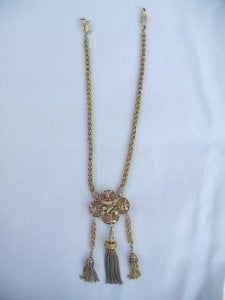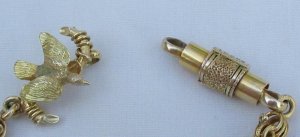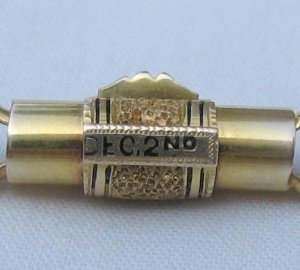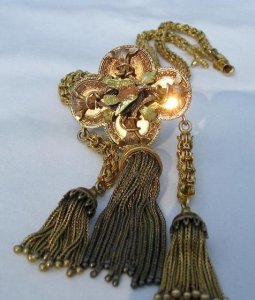Ellen
Super_Ideal_Rock
- Joined
- Jan 13, 2006
- Messages
- 24,433
This belonged to my grandmother. My mom tells the story that it was bought at an estate sale in CA many years ago. She seems to think it might be worth something. I have no idea if this story is true or not, she seems to remember sonme things differently than the actual facts sometimes.

It has not been cleaned, as I have no idea what it''s truly made out of, though it looks like some type of gold (but does gold turn green? it has green areas), so I''m waiting. There are no markings on it, except for what looks like a date on the clasp, which I have a picture of. If anyone has any info, I would greatly appreciate hearing.


It has not been cleaned, as I have no idea what it''s truly made out of, though it looks like some type of gold (but does gold turn green? it has green areas), so I''m waiting. There are no markings on it, except for what looks like a date on the clasp, which I have a picture of. If anyone has any info, I would greatly appreciate hearing.











300x240.png)